| | The Battle of Isandlwana |  |
|
+32Saul David 1879 Mr M. Cooper Drummer Boy 14 dlancast umbikazulu ciroferrara Al Amos DundeeBoer ciscokid quint Younghusband impi Umbiki garywilson1 JCAWG Frank Allewell Chard1879 SirDCC Mr Greaves Dave John joe Chelmsfordthescapegoat Neil Aspinshaw mons14 1879graves 90th littlehand izabel 24th old historian2 ADMIN 36 posters |
|
| Author | Message |
|---|
John
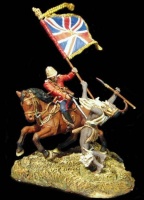
Posts : 2558
Join date : 2009-04-06
Age : 61
Location : UK
 |  Subject: Re: The Battle of Isandlwana Subject: Re: The Battle of Isandlwana  Fri May 20, 2011 6:39 pm Fri May 20, 2011 6:39 pm | |
| Would it have not been a safer bet to disperse some of the troops among the rocks right up against the rock face. Form lines to enable firing by rank positions. This would have allowed the troops to fire down into the mass ranks of the attacking Zulu's. the bodies of the dead and wounded would have themselves created another obstacle to clamber over making the up hill attack even harder. I don't think it was a good move setting up any kind of formations in the open when all sides are open to attack. it's like building a castle and then moving out of it to engage the enemy out in the open. |
|
  | |
Chelmsfordthescapegoat
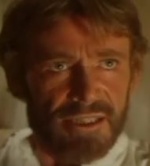
Posts : 2593
Join date : 2009-04-24
 |  Subject: Re: The Battle of Isandlwana Subject: Re: The Battle of Isandlwana  Fri May 20, 2011 6:47 pm Fri May 20, 2011 6:47 pm | |
| Look at Younghusband's situation. What did he do when the firing lines were overwhelmed the History books say, his stand was the last. His decision to move up, was a little to late. But I would like to think he saw the Mountain as a good defensive position. |
|
  | |
John

Posts : 2558
Join date : 2009-04-06
Age : 61
Location : UK
 |  Subject: Re: The Battle of Isandlwana Subject: Re: The Battle of Isandlwana  Fri May 20, 2011 7:05 pm Fri May 20, 2011 7:05 pm | |
| CTSG. Young husband. Good point.
This from Jamie's site.
Look how far the Britsih lines are from the mountain.
http://www.isandlwana1879.co.uk/index_files/Page4527.htm
Look at the Mountain. There is a slope leading up to the rock face. This is the area I'm talking about. If they had lined up on the slope shooting down there chances of survival would have increased.
http://www.isandlwana1879.co.uk/index_files/Page5509.htm |
|
  | |
impi

Posts : 2308
Join date : 2010-07-02
Age : 44
 |  Subject: Re: The Battle of Isandlwana Subject: Re: The Battle of Isandlwana  Fri May 20, 2011 7:36 pm Fri May 20, 2011 7:36 pm | |
| John. This what you are talking about I think. ?
By Mons. Forum Member.Click Here |
|
  | |
Mr Greaves

Posts : 747
Join date : 2009-10-18
 |  Subject: Re: The Battle of Isandlwana Subject: Re: The Battle of Isandlwana  Fri May 20, 2011 8:51 pm Fri May 20, 2011 8:51 pm | |
| Was Pulliene aware of how many Zulu's were actually on way to attack the camp. Or would it have been to late to carry out the actions mentioned by John. |
|
  | |
Dave

Posts : 1603
Join date : 2009-09-21
 |  Subject: Re: The Battle of Isandlwana Subject: Re: The Battle of Isandlwana  Fri May 20, 2011 9:01 pm Fri May 20, 2011 9:01 pm | |
| These standing orders. Were they directed only to those at Isandlwana or right across the board. |
|
  | |
90th
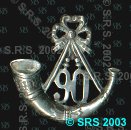
Posts : 10890
Join date : 2009-04-07
Age : 68
Location : Melbourne, Australia
 |  Subject: The Battle Of Isandlwana Subject: The Battle Of Isandlwana  Sat May 21, 2011 4:22 am Sat May 21, 2011 4:22 am | |
| Hi all. Dave . These orders were issued to ALL the column commanders in ALL of the 5 divisions and more than likely the higher ranked subordinates as well as far as I'm aware . Mr. Greaves . I think your question is the one of the main reasons what happened that day , did happen ! . Pulleine would have had no idea of the numbers he was facing until it was to late because of the zulu using the ridge to hide their advance . Therefore as the line of defence was to widely spread ( As instructed by you know who and by what ! ) and way to far out , they couldnt very well decide to pull back as the zulu's would certainly have outran them and cut them down quicker . John . Due to the distance involved there was no possible way for the troops to use the mountain as a major defensive position . The only way it could have been done was if Pulleine decided to ignore the standing orders and prepare to meet the threat in 2 defensive squares or something similar , I think Neil has already stated this . What we all must remember is the British had only fought the relatively minor tribes and they hadnt showed anything in the way of tactics as did the zulu army . So the British were on a steep and expensive learning curve . ctsg. Yes you are correct with Younghusband , but he was more fortunate than the others as he was formed up closest to the mountain and the direction he took along the slope was the only path he could have taken in any case . He didnt exactly attempt to climb the mountain but used the slope as his route of withdrawal . I doubt they could have used the smaller ( Northern ) face to climb to safety , as they would more than likely been over - run before they had negotiated the climb . The zulu were no doubt fitter and faster over the ground compared to the British troops . cheers 90th.  |
|
  | |
old historian2
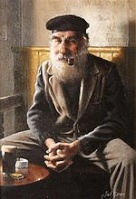
Posts : 1093
Join date : 2009-01-14
Location : East London
 |  Subject: Re: The Battle of Isandlwana Subject: Re: The Battle of Isandlwana  Sat May 21, 2011 8:55 am Sat May 21, 2011 8:55 am | |
| Those at RD received the same Order. "Defend" why did they not move out into the open and form the positions as laid down in the Standing Orders. Or was it a case of those in command using there brains by making the use of what was available.
Just out curiosity how is the area of a camp defined, who decides the perimeter lines. In the case of Isandlwana why was it such a large area, what was the advantage of making the camp so large. |
|
  | |
ciscokid
Posts : 187
Join date : 2010-02-04
 |  Subject: Re: The Battle of Isandlwana Subject: Re: The Battle of Isandlwana  Sat May 21, 2011 10:38 am Sat May 21, 2011 10:38 am | |
| I would have thought that they were so cock sure that they were going to win, don't forget, it was the top fighting force in the world with the state of the art MH against some natives with spears and shields... |
|
  | |
Chelmsfordthescapegoat

Posts : 2593
Join date : 2009-04-24
 |  Subject: Re: The Battle of Isandlwana Subject: Re: The Battle of Isandlwana  Sat May 21, 2011 11:16 am Sat May 21, 2011 11:16 am | |
| When they first arrived at Isandlwana under the command of the Good Lord Chelmsford. The camp was set out in a position that would have afforded a retreat to the base of the Mountain where natural defences were available. It was when he left it all went wrong. Troops being placed to far out as seen in the photo's posted. This was all down to Pulliene I do believe he was advised twice to bring in his men. But he left it too late. |
|
  | |
Chard1879
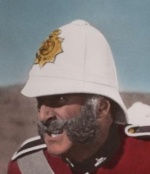
Posts : 1261
Join date : 2010-04-12
 |  Subject: Re: The Battle of Isandlwana Subject: Re: The Battle of Isandlwana  Sat May 21, 2011 11:53 am Sat May 21, 2011 11:53 am | |
| If the troops had been deployed correctly in a tight, defensive formation, close to the ammunition stores and with its flanks guarded. Indeed, even without a laager or breastworks being formed, the Isandlwana mountain itself provided a natural barrier to protect the rear whilst the British force could be deployed in a semi-circle around it. I think we could be fairly sure this would have been noticed by many of the officers there and were not in a position to use it. Perhaps Younghusband had seen this and assembled his men as close as he could but left it far to late.
I'm still of the opinion that the chain of command Brooke down quite early in the Battle. And that each officer done the best they could with their men to survive. Thus the various last stands and the large gaps between units. |
|
  | |
Frank Allewell

Posts : 8572
Join date : 2009-09-21
Age : 77
Location : Cape Town South Africa
 |  Subject: Re: The Battle of Isandlwana Subject: Re: The Battle of Isandlwana  Sat May 21, 2011 12:36 pm Sat May 21, 2011 12:36 pm | |
| A number of points to take issue with.
AS Neil points out.
1. Pullein was acting under orders in his defensive layout. Those orders couldnt apply to RD purley because of the situation, number of men, terrain etc.
2. There was never any suggestion that Chelmsford had laid out the camp to effect a retreat line to the wagons. Indeed a lot of these wagons arrived after he had departed.
3. The camp was laid out by Clery, not Chelmsford.
4. Pullein believed that the Zulu army was coming over the Nyoni ridge and acted accordingly within standing orders.
5. Pullein AND HIS SENIOR OFFICERS should and did know of the Zulu method of attack, it was widely published. For some reason they chose not to guard against a left or right horn but merely to concentrate on the 'Chest.
6. Although the plain apears immense, bare in mind that a very large portion was taken up by individual regimental wagon parks along the base of the scree slope and then the regimental tented areas. These took up an area stretching from the present access road across to the base of the Koppie. To say there was easy access to the mountain is eroneous.
7. Pullein obviously never expected the numbers in the zulu army, hence he didnt drop the tents. If he had it would have made a fighting retreat a lot easier.
8. There was an arrogance about the preparations for battle that seriously hindered the appraisal of the Zulu forces.
9. Once, for whatever reason, the line became distressed there was absolutly no chance of the forward companies retiring on the mountain. There was immense pressure from the Northern chest that forced Younghusband back along the mountain slopes. Mostyn and Cavaye were pushed from the uKhandempemvu on an Oblque towards the saddle.
10. Propable Porteus Took the major brunt from the fall backs on his left. Wardell fought his retreat along the bottom of the tent line with Pope.
11. What ifs can only be rational if they are taken in the context of the time and space of the moment.
Otherwise the answers are plain, yes IF the soldiers all climbed the top of the mountain and IF they carted up sufficient ammo then yes they would have suvived
12. The lower slopes are deceptive, Young husband got there because he followed the natural line of the skirt, he was the only one that could. For the rest a fighting retreat going backwards up that slope is to my mind impossible. Ive done it as a pretty damned fit person in shorts and trainers carrying a small ruck sack with water book and camera and been absolutly B*********D at the top. Certainly in no condition what so ever to try and fight of 20 000 Zuulus with the blood lust.
13. Quite late in the front line battle the recall was sounded twice. At that point there was still a cohesive command structure, either Pullein was still in command or his Adjutant Melvill. Other senior officers were with there companies. I dont believe Melvill would have taken the responsibility to sound that recall, ergo Pullein still alive and in control. The supposed position of Pulleins body would again suggest that he lasted untill the retreat was well under way. So I would disagree with Chard 1879 that the chain of command broke down early in the battle.
14. Pullein was advised to bring his companies in and reduce the front, advice he ignored, pick a reason. a) wasnt in his standing orders. b) didnt want to take orders from an Engineer. c) Was to in experienced. d) flustered. e) confidant that he was doing the right thing.
15. As i said earlier what ifs have to take into account information and situations at a given time, hindsight is an exact science that cant be applied in all situations, if we did that we could make up any scenarion that would fit.
Regards |
|
  | |
Chelmsfordthescapegoat

Posts : 2593
Join date : 2009-04-24
 |  Subject: Re: The Battle of Isandlwana Subject: Re: The Battle of Isandlwana  Sun May 22, 2011 3:22 pm Sun May 22, 2011 3:22 pm | |
| 1) RD was a store and hospital not a camp. They were lucky enough to have ready made defensives. And able to add to the fortifications with what was available.
2) Look at the photo On page 6 of this discussion. The wagons show where the original camp was when The Good Lord Chelmsford first arrived. Not that far from the mountain. A retreat to the base could easily have been made if they hadn't been position where they were by Pulliene.
3) Although the camp was laid out by Clery. It would have been the Good Lord Chelmsford who would have overseen that it was done right. He was in command at that point.
4) Zulu sightings had been reported from the early hours after Chelmsford had left (see the missing 5 hours) eyewitness accounts. Pulliene done nothing. The Zulus had to cover between 5.- 6 miles to attack Isandlwana on foot. There would have been enough time to pull the troops in, arrange Ammo stores and form firing ranks at the base. Maybe even getting the two cannons in place. Instead he send his men into the open to meet the enemy.
5) I think the whole British Army at Isandlwana was to blame for that no matter what rank.
6) No comment.
7) No body expected the 20000 Zulu's but when the news came in that there was. The Standing Orders should have been put to one side and counter measures made to suit the situation as it was.
8) That's what happens when you have superior weapons. But as it was said in the film Zulu Dawn. "Bullets run out those bloody spears don't"
9) Pulliene had no front line experience, he was admin staff. He just followed Standing orders to the letter. He was unable to adapt.
10 11 12 Wouldn't have happen if the right decisions had been made.
13) Hear say evidence. If there had been more reports of this. Then I would take it as fact.
14) Admin Staff. Nothing else one can say. He never listened.
15) What if's ( No room for what if's) what if the British had never invaded Zululand..
|
|
  | |
John

Posts : 2558
Join date : 2009-04-06
Age : 61
Location : UK
 |  Subject: Re: The Battle of Isandlwana Subject: Re: The Battle of Isandlwana  Sun May 22, 2011 7:19 pm Sun May 22, 2011 7:19 pm | |
| Some good points. It's rather looking like the incapabilities of Pulleine. I'm not sure following standing orders will relinquish what took place that day. Chelmsford was not there, Durnford arrived after the troops had been positioned and I believe he was one of those would advised Pulliene to pull in is men or was it ordered him to pull in his men. I think the use of the Mountain as a form of defence would have probably save the day. |
|
  | |
Neil Aspinshaw

Posts : 553
Join date : 2009-10-14
Location : Loughborough
 |  Subject: Re: The Battle of Isandlwana Subject: Re: The Battle of Isandlwana  Sun May 22, 2011 8:36 pm Sun May 22, 2011 8:36 pm | |
| Chelmie
Without 1st hand knowlege of the topography of the field like Springbok, it is simply impossible to make assumptions from photographs, Be careful on your comment about the position of the wagons in point No2, the photo gives the viewer an entirely wrong perspective of the wagon park in its relationship with the camp, layout it is in fact on the downside slope of the nek, and, from that position would give a mere 50 yard field of fire from the main zulu body, look at the the wagon at 45 degress in the erosion cut, that is over 200 yards from the main stands astride the road and 100 from the now position of the main 24th memorial, it might as well be a mile, as there is scant information or records to show exactly how long Shepstone held the north face before the zulu were infiltrating this area, fact was the guns had to turn off the road only a few hundred yards from this position, (and that was as the main line began to withdraw) proves that this area was becoming untenable) .
I can tell you (although cairns are not the full story) that the sheer number of cairns on THE NORTH FACE, shows extensive fighting took place, completely out of sight of the HQ tent, and, most probably certainly to the companies in the line. On the RDVC site I posted an image I took from Malhabamkhosi, take a close look at the main car park image http://www.rorkesdriftvc.com/stories/isandlwana125.htm.
This was not Lloyds position when he took that photo, in fact he was off to the left of my camera position, and the line of five vertical cairns in my image is actually above the wagons, so tactically the use of this as a defensive bastion was effectively no use where it was. This line of cairns can clearly be seen from my video. The position is also marked in Jacksons HOTS and Knights images.
Pulleine had fall in called at 8.05am at the first sign of threat, and from that time quantities of zulu's appeared on the skyline to the north east, Scott had Whitelaw of the NC ride in and report 1000's of zulus to the North east, whilst his dispositions was probably that laid out by Chelmsford/Clery, but with half the men to do it. He did know the threat, as it manifested at the time, and that was from the North East, so he opted to meet that threat, apart from what intelligence he had. But, and heres the but, he was in total dark about the forthcoming flanking moves, and, by the time he did know he was in a position which gave little then for cross company co-operation as they barely knew what was going off to the left and right of them, and, too dispersed to make any telling co-operation quickly possible without affecting the overall integrity of his line. With no proper reserve he then tried a strategic withdraw, with one flank (the right) already dissolving
So the main reason for the demise was lack his lack of intelligence, it happened just a year later at Miawand, so he was not unique in his dilemma.
|
|
  | |
John

Posts : 2558
Join date : 2009-04-06
Age : 61
Location : UK
 |  Subject: Re: The Battle of Isandlwana Subject: Re: The Battle of Isandlwana  Sun May 22, 2011 8:48 pm Sun May 22, 2011 8:48 pm | |
| Hi Neil the link you posted say's page cannot be found. - Quote :
- in total dark about the forthcoming flanking moves
, Didn't John Chard report to Dunford that he had seen Zulus moving to wards the ridge. |
|
  | |
Dave

Posts : 1603
Join date : 2009-09-21
 |  Subject: Re: The Battle of Isandlwana Subject: Re: The Battle of Isandlwana  Sun May 22, 2011 9:48 pm Sun May 22, 2011 9:48 pm | |
| Proceeds from the court of enquiry.
Click Here. |
|
  | |
Frank Allewell

Posts : 8572
Join date : 2009-09-21
Age : 77
Location : Cape Town South Africa
 |  Subject: Re: The Battle of Isandlwana Subject: Re: The Battle of Isandlwana  Mon May 23, 2011 11:53 am Mon May 23, 2011 11:53 am | |
| CTSG
Point 3
Your quite corect Chelmsford did aprove the over extended camp layout........Glynn suggested that the camp be lagered, he received a curt reply that " it was not worthwhile, it will take to much time." Pity the critics, Dunbar, Glynn, Mellvil and Hamilton Brown didnt do more than complain to each other.
Neil is quite right inferences drawn from individual photos could be missleading.
Regards |
|
  | |
Chelmsfordthescapegoat

Posts : 2593
Join date : 2009-04-24
 |  Subject: Re: The Battle of Isandlwana Subject: Re: The Battle of Isandlwana  Mon May 23, 2011 1:06 pm Mon May 23, 2011 1:06 pm | |
| - Quote :
- Pity the critics, Dunbar, Glynn, Mellvil and Hamilton Brown didnt do more than complain to each other.
You have answered your own question.. I will post this famous sentence again. I just wish someone on the forum can see the bigger picture of what the Good Lord Chelmsford is trying to say. He putting trust in his men. Or are we saying he should have been there to hold thier hand's !!!! [i]"When a column is acting SEPARATELY in an enemy's country I am quite ready to give its commander every latitude, and would certainly expect him to disobey any orders he might receive from me, if information which he obtained showed that it would be injurious to the interests of the column under his command".[/i] Here's the clue "When a column is acting SEPARATELY in an enemy's country" |
|
  | |
John

Posts : 2558
Join date : 2009-04-06
Age : 61
Location : UK
 |  Subject: Re: The Battle of Isandlwana Subject: Re: The Battle of Isandlwana  Mon May 23, 2011 1:19 pm Mon May 23, 2011 1:19 pm | |
| |
|
  | |
old historian2

Posts : 1093
Join date : 2009-01-14
Location : East London
 |  Subject: Re: The Battle of Isandlwana Subject: Re: The Battle of Isandlwana  Mon May 23, 2011 3:14 pm Mon May 23, 2011 3:14 pm | |
| John. Perhaps that area wasn't assessable back in 1879. That's why it was overlooked.
CTSG. I must say that quote you posted by Chelmsford was a kind of ok to do whats necessary even if it means breaking standing orders. But was this aimed at British officers as a whole or at an individual. |
|
  | |
Frank Allewell

Posts : 8572
Join date : 2009-09-21
Age : 77
Location : Cape Town South Africa
 |  Subject: Re: The Battle of Isandlwana Subject: Re: The Battle of Isandlwana  Mon May 23, 2011 3:32 pm Mon May 23, 2011 3:32 pm | |
| CTSG
Be careful of that Petard.
' When a COLUMN is acting seperatly'. Since when has the base camp been accorded that title? Source please.
Second point that quote comes from a letter/ critism pointed at a particular individuall. I have seen no evidence that it was made public as a general order, perhaps Im wrong and you could point me in the right direction?
The point still stands, you have made the assertion that Chelmsford aproved the camp site. A goodly portion of the senior officers were aghast at the position, point proved by history really.
John
Thats the exact point that Younghusband made his last stand.
Regards |
|
  | |
Chelmsfordthescapegoat

Posts : 2593
Join date : 2009-04-24
 |  Subject: Re: The Battle of Isandlwana Subject: Re: The Battle of Isandlwana  Mon May 23, 2011 9:11 pm Mon May 23, 2011 9:11 pm | |
| Let's not start getting picky.. Those let at the base camp were working
SEPARATELY from the remainder of the column who had left with Chelmsford.
It was in fact directed at Durnford prior to Isandlwana Durnford was at Isandlwana so he knew the good lords Chelmsford's view of the matter. Basically take some bloody responsibility if that's what's needed.
You are repeating yourself. Once the camp had been laid out there was plenty of opportunity for those who is dislike the arrangement to speak up. That's why there comments were over looked. You can say what you like after the event.
You need to look at the bigger picture. See beyond your history books and look at the evidence of those who were there. |
|
  | |
impi

Posts : 2308
Join date : 2010-07-02
Age : 44
 |  Subject: Re: The Battle of Isandlwana Subject: Re: The Battle of Isandlwana  Mon May 23, 2011 9:34 pm Mon May 23, 2011 9:34 pm | |
| Getting back to the question. Could the British have used the slope in the last photo posted by John as place where their life expectancy would have been better than the positions selected by Pulliene. |
|
  | |
impi

Posts : 2308
Join date : 2010-07-02
Age : 44
 |  Subject: Re: The Battle of Isandlwana Subject: Re: The Battle of Isandlwana  Mon May 23, 2011 9:55 pm Mon May 23, 2011 9:55 pm | |
| Just a thought. Why did Pulliene not construct some kind of fortification. Springbok says. That some of the officers complained about Chelmsford not doing so yet nothing was done to rectify the problems they say existed after Chelmsford left. |
|
  | |
ADMIN
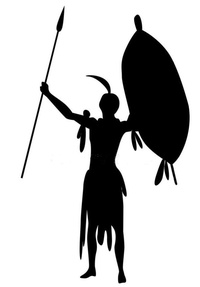
Posts : 4354
Join date : 2008-11-01
Age : 65
Location : KENT
 |  Subject: Re: The Battle of Isandlwana Subject: Re: The Battle of Isandlwana  Mon May 23, 2011 10:21 pm Mon May 23, 2011 10:21 pm | |
| This topic seems to be covering old ground. More than happy to let it continue but new material would be refreshing.  |
|
  | |
littlehand
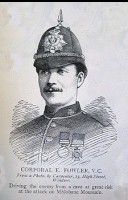
Posts : 7076
Join date : 2009-04-24
Age : 55
Location : Down South.
 |  Subject: Re: The Battle of Isandlwana Subject: Re: The Battle of Isandlwana  Tue May 24, 2011 8:26 am Tue May 24, 2011 8:26 am | |
| Not listening to good advise from those that knew fighting methods of the Zulu.
Lack of intelligence. Not knowing the positions of the enemy.
Failing to construct a defensive position along will failure to create ammo stations at various points.
issuing of unclear orders.
Dividing of forces.
Leaving an Admin clerk in command.
Positioning of ground troops to far from the camp.
And lastly overwhelming numbers of enemy. This being the Major cause.
Well that's what I think.
|
|
  | |
90th

Posts : 10890
Join date : 2009-04-07
Age : 68
Location : Melbourne, Australia
 |  Subject: The Battle Of Isandlwana Subject: The Battle Of Isandlwana  Tue May 24, 2011 10:56 pm Tue May 24, 2011 10:56 pm | |
| Hi Impi / John. I dont mean to sound dismissive or arrogant , please read my Ist post on this thread as I believe it will answer your questions . :lol: What many seem to forget is ' Hindsight is a wonderful thing ' . You must put yourself in their position and think of 1879 zululand and the Victorian era , and their previous conflicts with the Xhosa . Not 2011 after the war has been well and truly dissected by many Historians and former soldiers . Hope this makes sense.  cheers 90th. |
|
  | |
littlehand

Posts : 7076
Join date : 2009-04-24
Age : 55
Location : Down South.
 |  Subject: Re: The Battle of Isandlwana Subject: Re: The Battle of Isandlwana  Sun Jul 17, 2011 12:31 pm Sun Jul 17, 2011 12:31 pm | |
| Map showing positions on British companies at Isandlwana. [You must be registered and logged in to see this image.] |
|
  | |
Frank Allewell

Posts : 8572
Join date : 2009-09-21
Age : 77
Location : Cape Town South Africa
 |  Subject: Re: The Battle of Isandlwana Subject: Re: The Battle of Isandlwana  Mon Jul 18, 2011 8:55 am Mon Jul 18, 2011 8:55 am | |
| Littlehand
That map appears to have been extracted from the map prepared for Queen Victoria in 1879, Prepared by James Wyld, Geographer to the Queen. It was prepared in March 1879. There are a number of possible errors, The position of the NNC, Barton and Lonsdal for instance so I would not take that as Gospel.
Regards |
|
  | |
umbikazulu
Posts : 16
Join date : 2011-03-16
Age : 72
Location : andalucia spain
 |  Subject: isandlwana Subject: isandlwana  Tue Jul 19, 2011 7:48 am Tue Jul 19, 2011 7:48 am | |
| Hi all.
Isn't it fair to say that Pulliene wasn't convinced that a full scale attack was underway until too late, it would have taken time to set up on Isandlwana hill especially as all the ammunition would have had to be 'handballed' up the hill and was there somewhere for the cannon to set up? it seems to me that Pulliene was reacting to the moment and not (as a good commander should) thinking ahead, examining the probabilites of what was taking place and acting accordingly. |
|
  | |
Chelmsfordthescapegoat

Posts : 2593
Join date : 2009-04-24
 |  Subject: Re: The Battle of Isandlwana Subject: Re: The Battle of Isandlwana  Tue Jul 19, 2011 8:08 am Tue Jul 19, 2011 8:08 am | |
| It has been well established that Pulliene was not the man for the Job. He failed to do what you have mentioned. He was left in command and diid nothing until it was to late. This has been covered many times before but some continue to blame the Good Lord Chelmsford for Pulliene's and Durnford's errors. Its refreshing to see someone on the forum, is looking at the bigger picture. |
|
  | |
Frank Allewell

Posts : 8572
Join date : 2009-09-21
Age : 77
Location : Cape Town South Africa
 |  Subject: Re: The Battle of Isandlwana Subject: Re: The Battle of Isandlwana  Tue Jul 19, 2011 8:26 am Tue Jul 19, 2011 8:26 am | |
| Probably the biggest single contributing factor was not the ineficiency of virtually the entire officer cadre but rather the lack of intelligence.
Pullein was only concerned with a head on attack coming over the ridge, for that he took up the prescribed defensive attitude.
His downfall was not appreciating the Zulu methods of attack. He should have been aware of the horns. He had more than enough mounted men to have had a more effective screen thrown out. If he had, a different defensive pattern could have been arranged, he had the time, he had the men and he had the organisation
The rest is really an assortment of cameos.
There is no bigger picture, the Zulus were treated with contempt and extracted a high price for that.
Regards |
|
  | |
littlehand

Posts : 7076
Join date : 2009-04-24
Age : 55
Location : Down South.
 |  Subject: Re: The Battle of Isandlwana Subject: Re: The Battle of Isandlwana  Wed Jul 20, 2011 8:26 pm Wed Jul 20, 2011 8:26 pm | |
| Springbok. That will do nicely. Don't think even CTSG would disagree with that. |
|
  | |
Dave

Posts : 1603
Join date : 2009-09-21
 |  Subject: Re: The Battle of Isandlwana Subject: Re: The Battle of Isandlwana  Thu Jul 28, 2011 7:53 pm Thu Jul 28, 2011 7:53 pm | |
| Why was Younghusband company the only one to kept near the main camp. While the others were sent out to meet the enermy. Or Did Younghusband take it upon himself to position himself there. |
|
  | |
Frank Allewell

Posts : 8572
Join date : 2009-09-21
Age : 77
Location : Cape Town South Africa
 |  Subject: Re: The Battle of Isandlwana Subject: Re: The Battle of Isandlwana  Mon Aug 01, 2011 9:52 am Mon Aug 01, 2011 9:52 am | |
| Hi Dave
Younghusbands position was on the left flank of the firing line, between the northern end of the mountain and the spur, tghats also the highest, in terms of elevation, of the troop positions and really gave Younghusband the only overall picture of the battle field. Its speculated that after the right wing was seen moving to the west that George Shepstone moved to Younghusbands left and eventually around the back of the mountain to his last stand position. Younghusband retreated along the base of the mountain to his eventual last stand. Its speculative how he reached that position. There are two probable routes: 1) following the natural line along the mountain terminating in his final fighting position 2) retreating between the company wagons and the scree slope to the saddle area and from there being forced up the mountain to the small plateau.
No way ever of knowing which.
But he was definitly not kept back in camp, as far as Im aware the only significant body kept back was Krohn.
Hope that helps
Regards |
|
  | |
Dave

Posts : 1603
Join date : 2009-09-21
 |  Subject: Re: The Battle of Isandlwana Subject: Re: The Battle of Isandlwana  Mon Aug 01, 2011 7:48 pm Mon Aug 01, 2011 7:48 pm | |
| Thanks Springbok. I have this map in the back of the book I brought. "Narrative of the Field Operations Connected with the Zulu War" The map shows "Younghusband, Mostyn, and Canaye's companies located around the neck near the hill of Isandlwana. At 12:15 they have moved obviously to engage the enemy, if the British were so sure that the best manoeuvre was to meet the enemy away from the camp was Younghusband left on his own, sure if the thinking of the day was to move away from the camp, would he have not been more useful out there with Mostyn, and Canaye's companies. See section of map. Highlighted in red. [You must be registered and logged in to see this image.] |
|
  | |
Frank Allewell

Posts : 8572
Join date : 2009-09-21
Age : 77
Location : Cape Town South Africa
 |  Subject: Re: The Battle of Isandlwana Subject: Re: The Battle of Isandlwana  Tue Aug 02, 2011 7:34 am Tue Aug 02, 2011 7:34 am | |
| Hi Dave
When news of Zulu movements filtered through to the camp Pullein/Durnford ( its unclear who ) sent Dyson cavaye and Mosttyn onto the spur to engage those movements. The command still at that point had no idea what they were dealing with in terms of quantity or intention.
The fact that those companies were not attacked originally, the right horn passed across there front, probably again lead to the complacency. It was really only when the attack started along the Nyoni Ridge that Melvill was sent up to withdraw those troops, along with Raw Vause and the rest of the horsemen.
When they withdrew down the spur, Porteous covered the retreat, helped at a later point by Wardell. Once the withdrawl had started Pullein then formed his defensive line covering the camp. At that point Younghusband moved into the line with the rest of the companies. Its very debatable who was next to Younghusband, Mike Snook is vehement in pointing out that a British infantry battalion would not allow a native force to bisect its line. There is however a number of sources that point to Captain CA Erskines No4 Company 2/3rd NNC. Lt Wally Erskine commented that they were 'Pakhades Men'.
Hope that helps |
|
  | |
dlancast
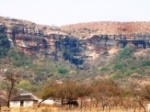
Posts : 42
Join date : 2010-11-05
Location : Texas
 |  Subject: Re: The Battle of Isandlwana Subject: Re: The Battle of Isandlwana  Tue Aug 02, 2011 5:44 pm Tue Aug 02, 2011 5:44 pm | |
| Springbok9, I have walked the first route you suggested for Younghusband (not an easy trek, owing to the slope and rocks). I had a bit of a difficult time and I wasn't pursued by thousands of Zulus. When there was an archeological dig (I think 2000), I wonder if this was addressed? There should have be a good trail of shell casings and such along there.
DSL |
|
  | |
Frank Allewell

Posts : 8572
Join date : 2009-09-21
Age : 77
Location : Cape Town South Africa
 |  Subject: Re: The Battle of Isandlwana Subject: Re: The Battle of Isandlwana  Wed Aug 03, 2011 7:51 am Wed Aug 03, 2011 7:51 am | |
| DSL
The first and traditional route of Younghusband would have him retreating along the scree slope( pursued by the chest) either between the wagons and the mountain or between the waggons and the tents, passed the command tent (around here he would have encountered the left wing elements) and been forced up the mountain. You would I have no doubt done that climb. Not easy at all, and in particular not easy moving backwards fighting of the hoards.
So is it not possible that from his first position, bare in mind that conjecturally A Company was being forced back to that route by the uKhandempemvu, that his easier path to retreat could very well have been along the horizontal ledge? Its all about time and space really, Ive sat on that edge and tried to picture the retreat, Im sure that the line would have folded from the A company right flank forcing A company at an oblique up the slope. That pressure would have I believe have encouraged Younghusband to the higher point.
Natural instinct I suppose that people tend to move upwards when in danger. Look how many films end up with the hero trapped on the roof ( or is that just Hollywood).
Regards |
|
  | |
Dave

Posts : 1603
Join date : 2009-09-21
 |  Subject: Re: The Battle of Isandlwana Subject: Re: The Battle of Isandlwana  Wed Aug 03, 2011 8:53 pm Wed Aug 03, 2011 8:53 pm | |
| As said in Zulu Dawn. " Take the high ground" not that it done them much good. |
|
  | |
Drummer Boy 14
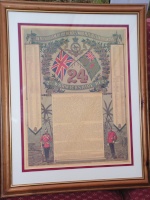
Posts : 2008
Join date : 2011-08-01
Age : 27
 |  Subject: Re: The Battle of Isandlwana Subject: Re: The Battle of Isandlwana  Fri Aug 05, 2011 10:34 pm Fri Aug 05, 2011 10:34 pm | |
| In my veiw Durnford was the scapegoat in this battle. Senior officers acused him of leaving the camp whilst he should have defened it because he had been ordered to take command. The is not true his orders state that he was to march to Isandlwana at once, they did not mention taking command, proof of this is available at the Royal Engineers musem where his original orders are preserved. Now what would you do if you saw 20,000 Zulus advancing and killing a whole camp full of men. The answer is simple anyone would run. So it would take a man of untold bravery to stand against the Zulus. This is a breif account of Durnfords last stand.
When James Hamer was trying to escape on his horse he noticed that the escape route over the Nek (low ground between to high points) was being kept open by men of the 24th(probely Popes) and good old Colonel Durnford making a heroic and most gallant last stand to cover the retreat. Having failed to find Pulline Durnford is said to have made a stand on the slopes of the Stony Koppie with 40 white horsemen and a further 30 Recoats. The willingness of Lieutenant Scott and 13 of his Natal carabineers to stand by the officer whom owing to bad blood at Bushman's river pass is nothing short of remarkable. All were excellent horsemen and crack shots and could easily of escaped as a group but amazingly they choose a hero's death. Durnford this time was an inspiration, Zulu eyewitness reports claim that a one armed officer killed 4 Zulu with his revolver as his party was forced by weight of numbers up the slopes of Stony Koppie. Melhlokazulu saw their end “ it was along time before they were over come, they through down their guns when their ammunition was done and then commenced with their pistols then they formed a line shoulder to shoulder and back to back and fought with there knifes.”
|
|
  | |
90th

Posts : 10890
Join date : 2009-04-07
Age : 68
Location : Melbourne, Australia
 |  Subject: Battle Of Isandlwana Subject: Battle Of Isandlwana  Sat Sep 10, 2011 2:40 pm Sat Sep 10, 2011 2:40 pm | |
| Hi all.
Wasnt sure where to post this and I'm sure its been asked before , and not sure anyone was able to give an answer.
From Sonia Clarke's ' Zululand At War ' . Clery in a letter dated Rorkes Drift 17 Feb 1879 to Colonel Harman, states
it took 3 1/2 hrs for the Chelmesford force to march out to Dartnell's assistance .
cheers 90th. |
|
  | |
littlehand

Posts : 7076
Join date : 2009-04-24
Age : 55
Location : Down South.
 |  Subject: Re: The Battle of Isandlwana Subject: Re: The Battle of Isandlwana  Fri Sep 30, 2011 1:55 pm Fri Sep 30, 2011 1:55 pm | |
| [You must be registered and logged in to see this image.]On January 11, 1879, the central British invasion column commanded by Lt. Gen Lord Chelmsford crossed the Zululand border at Rorke’s Drift and camped at a distinctive rocky outcrop known as Isandlwana. King Cetshwayo waited until he was sure Chelmsford was the main effort before concentrating his Zulu forces. He entrusted the command of his main Zulu impi of 25,000 warriors to Chiefs Ntshingwayo kaMahole Khoza and Mavumengwana and this army left Ulundi on January 17th, reaching the Isandlwana area by afternoon of the 21st. In order to get closer to the British position and avoid crossing 10 miles of open plain, the impi moved up onto the Nqutu plateau and hid in a deep ravine about 4 miles from the head of the spur that runs down to the plain where Isandlwana lies (see Figure x). Zulu scouts screened the movement. It was bad timing for Chelmsford. Earlier that morning he had divided his command and personally led one half on a surprise night march to investigate Zulu activity to the southeast of camp. At the Isandlwana camp, all that remained were 5 companies of Imperial infantry together with 2 guns and a number of auxiliaries and volunteers, about 1,700 men total.Early in the morning of the 22nd, a Native Horse patrol spotted some Zulus on the Nqutu plateau. One of the British officers, COL Anthony Durnford, decided to investigate their movements, sending out further patrols to intercept what he thought were retreating Zulus going after Chelmsford further to the east. Up on the plateau, a trooper saw a few Zulus herding a small group of cattle up a slope and gave chase. When he got to the top of the small rise he found a deep ravine just beyond. As Morris puts it: “…in astonishment, he stared into the ravine itself. Closely packed and sitting in utter silence, covering the floor of the ravine and perched on the steeply rising sides, stretched as far as the eye could see in both directions, were over 20,000 Zulu warriors.” The entire Zulu host swarmed out of the ravine and launched a spontaneous attack. The ravine was four miles from the spur leading down to the valley and Isandlwana (see figure A-14). In less than twenty minutes the Zulus were over the lip of the plateau. Zulu regiments streamed down the spur, to the west behind Isandlwana and to the east over the lip and through the notch. For almost two miles along the edge, the lip was black with Zulus. In the camp on the valley floor, the British officer in charge, LTC Henry Pulleine, finally appreciated the extent of the danger his men faced. LTC Pulleine placed three companies of imperial infantry 200 yards north of the camp to stop the Zulus racing down the spur – these men lined up over a 600 yard front. Another three companies were lined up perpendicular, covering an eastern front of 1,000 yards. A 300 meter gap persisted at the juncture of these two fronts and this is where two native companies (NNC) inadvertently ended up. Durnford’s small force took up a position in a donga on the extreme right flank of Pulliene’s line (see figure A-14). The firing along the entire perimeter of camp was general by now as all the Zulus got off the plateau and attempted to embrace the British with their deadly chest and horns. Disciplined volley fire brought a halt to the Zulu charge. The warriors flung themselves down, creeping and crawling forward between volleys. Durnford’s detachment halted the left Zulu horn. To the north of the tents, Younghusband, Mostyn, and Cavaye were directing the massed fire of their 3 companies into the right horn of the umKhulutshane and isaNgqu, who had come down the spur and advanced to within 200 hundred yards of the British lines. umHlanga and uVe. Finally, the uDududu and uNokenke had circled far beyond the left of the British line and were advancing through the valley behind Isandlwana to attack the rear of the British position. Ammunition started to run low. The bulk of the men had started the fight with only 40-50 rounds each. Unfortunately the two battalion ammunition wagons were stationed several hundred meters or more to the rear where the ammunition was packed into heavy wooden boxes, secured by 2 copper bands and 18 large screws. British fire slackened as the trickle of supply could not keep up with demand. As Durnford’s men ran out of ammunition, he was forced to abandon the donga and fall back on the camp, exposing the right flank of the Pope’s line to the pursuing Zulu. Fire was slackening everywhere and the warriors stretched out in the grass noted the change. A great voice called out in Zulu and thousands of warriors stopped their humming murmur and leapt up with a war cry as they charged forward. The sight of so many sharp assegais headed their way finally snapped the morale the Natal Kaffirs plugging the crucial gap between the north and east fronts. They broke and raced for the rear, leaving a 300 yard hole that the Zulu poured into. The British position was breached. Hundreds of Zulus were onto the backs of Cavaye and Mostyn’s men before they knew what had hit them. Pulleine had no reserve and his lines were stretched too thin to react in time to the breach. Organized resistance collapsed as the Zulus swarmed over the redcoats. Individual infantry companies and platoons fought on resolutely, either dying in place or in small pockets that formed here and there over the camp. Only a small number of auxiliaries and mounted soldiers managed to escape.12 In all almost 1,500 troops died at Isandlwana -only 55 Europeans survived out of 950 troops, and another 550 Natal Kaffer auxiliaries also perished.13 Zulu losses were equally severe however probably 1,000 warriors killed outright, and perhaps another 1,000 later died of severe wounds. Conclusion At Isandlwana, each side sought to apply their unique advantage over their adversary – for the British, it was firepower, for the Zulu it was a 13-1 numerical superiority. In this regard the redcoats failed when they could not sustain their firepower for long enough. Stockpiling of ammunition in the center or nearby is essential to maintaining a heavy volume of fire. As we noted above, the regimental reserve ammunition was not properly distributed for the deployed ranks. There were other important key factors as well. In order to buy time to apply their firepower against much larger native forces, the Europeans required some kind of fortification. Pulleine did not use any.The outnumbered British failed to utilize a 360° defense. The square formation is essential for a unit to fight non-linearly when outnumbered, outflanked, and surrounded. At Isandlwana Pulleine stretched his lines too thin and failed to bring his British ranks into a square or circle (laager). Instead, fewer than six hundred troops were arranged to cover more than a mile of camp frontage. Finally, Chelmsford did not enjoy situational awareness. Constant scouting around the perimeter could have forewarned him not to divide his army in half when the Zulu were within striking range. source: Pardee Rand Graduate School |
|
  | |
ADMIN

Posts : 4354
Join date : 2008-11-01
Age : 65
Location : KENT
 |  Subject: Ngwebeni Valley Subject: Ngwebeni Valley  Fri Jun 01, 2012 7:33 pm Fri Jun 01, 2012 7:33 pm | |
| This is the traditional spot that Raw would have looked down into the valley and seen the army. It's a long way down there and a damned hard climb to get onto the top of Mabaso hill where the photo is taken from. Its often been said that the sentry on the top of isandlwana was wasted because the mountain wasn't high enough. The seond photo is taken from the same position as the first, on the lip of the valley. Ive just turned 180 degrees and low and behold there is the top of the mountain, the third photo is with a telephoto lens. So in theory that sentry should have heard the gunshots from Raw and would have then seen the army appearing over the lip. So possibly score a point for the Lock and Quantrills theorie? [You must be registered and logged in to see this image.]Photos and text by Springbok. |
|
  | |
Chelmsfordthescapegoat

Posts : 2593
Join date : 2009-04-24
 |  Subject: Re: The Battle of Isandlwana Subject: Re: The Battle of Isandlwana  Fri Jun 01, 2012 11:10 pm Fri Jun 01, 2012 11:10 pm | |
| That little hill in the distance. is that " Isandlwana" |
|
  | |
90th

Posts : 10890
Join date : 2009-04-07
Age : 68
Location : Melbourne, Australia
 |  Subject: The Battle Of Isandlwana Subject: The Battle Of Isandlwana  Fri Jun 01, 2012 11:53 pm Fri Jun 01, 2012 11:53 pm | |
| Hi Springbok . Great photos much appreciated . Pete thanks for posting them .  . cheers 90th. |
|
  | |
Frank Allewell

Posts : 8572
Join date : 2009-09-21
Age : 77
Location : Cape Town South Africa
 |  Subject: Re: The Battle of Isandlwana Subject: Re: The Battle of Isandlwana  Sat Jun 02, 2012 8:22 am Sat Jun 02, 2012 8:22 am | |
| CTSG
The little piece peeping round the corner is the top plateau of isandlwana and arguably the most obvious place for a sentry to have been posted.
Cheers |
|
  | |
Mr M. Cooper
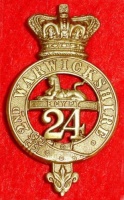
Posts : 2591
Join date : 2011-09-29
Location : Lancashire, England.
 |  Subject: The Battle of Isandlwana Subject: The Battle of Isandlwana  Sat Jun 02, 2012 3:04 pm Sat Jun 02, 2012 3:04 pm | |
| Hi springbok. Many thanks for sending Pete these pictures, and thanks to Pete for posting them, much appreciated.  It appears that there may be a hiccup though, the first and third pictures look identical to me, and reading the decriptions, should picture one be a different photo?  Not nit picking mate, honestly.  Martin.  |
|
  | |
old historian2

Posts : 1093
Join date : 2009-01-14
Location : East London
 |  Subject: Re: The Battle of Isandlwana Subject: Re: The Battle of Isandlwana  Sat Jun 02, 2012 6:33 pm Sat Jun 02, 2012 6:33 pm | |
| Is that really 5 miles away. |
|
  | |
| | The Battle of Isandlwana |  |
|
